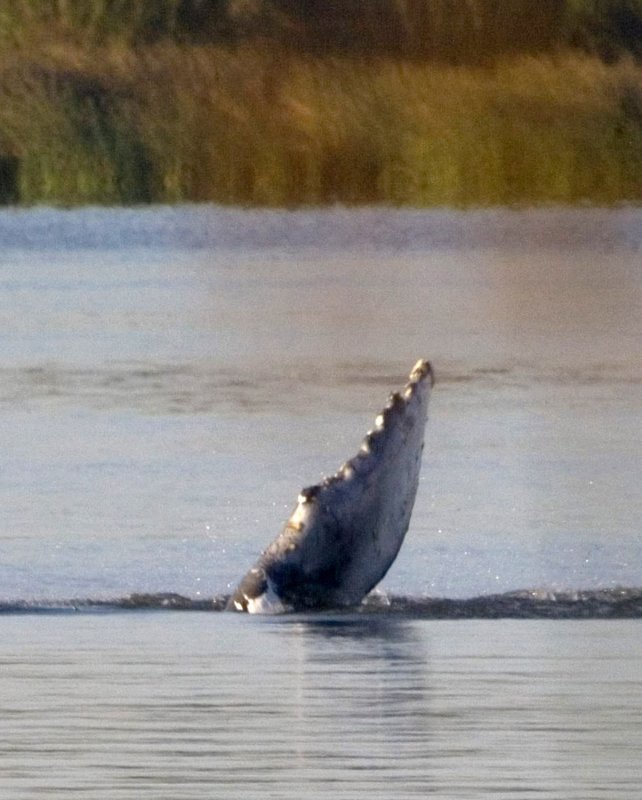Wounded humpback whale "Delta" slaps her flipper against the water of the Sacramento River near Rio Vista, California on May 24, 2007. Authorities have stopped trying to herd two wayward whales down the river and out to sea.(UPI Photo/Aaron Kehoe) |
License Photo
CANTERBURY, New Zealand, April 22 (UPI) -- Humpback whales have a mysteriously precise navigational skill that cannot be explained by known theories, New Zealand researchers say.
Scientists at the University of Canterbury tracked 16 tagged whales by satellite as they migrated thousands of miles northwards from the South Atlantic and South Pacific and found that for days at a time the whales swam legs of their journey -- often more than 500 miles -- with unerring accuracy, the Sydney Morning Herald reported Wednesday.
In spite of the effects of weather and ocean currents, most of the whales maintained an almost dead-straight course, deviating by less than 1 degree, the researchers said.
"Such remarkable directional precision is difficult to explain by established models of directional orientation," Canterbury researcher Travis Horton wrote in the Royal Society journal Biology Letters.
Most long-distance migrating animals are thought to navigate using a compass based either on the Earth's magnetic field or the position of the sun, but neither method can account for the extraordinary navigational ability of humpback whales, the scientists said.
"It seems unlikely that individual magnetic and solar orientation cues can, in isolation, explain the extreme navigational precision achieved by humpback whales," the study said.
"The relatively slow movements of humpback whales, combined with their clear ability to navigate with extreme precision over long distances, present outstanding opportunities to explore alternative mechanisms of migratory orientation based on empirical analysis of track data," it concluded.















